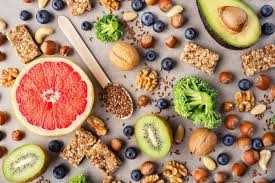
Of the five great kingdoms of living things, the animal kingdom is by far the largest. Scientists have identified at least two million different kinds or species, from tiny worms smaller than a full stop, to huge elephants and blue whales. There are almost certainly at least the same number of species still to be identified – mainly insects in tropical forests. The total number of animal species may be far higher: 10 million, or even more. The key features of an animal are that it has a body made of many microscopic cells and it gets its energy and nutrients by eating – that is, it takes in or consumes food. Most animals can also move about during all or part of their lives.
Most animals ingest their food. This means they take food items into their bodies through an opening, the mouth, to be digested and absorbed inside. However a few creatures feed in more unusual ways. A tapeworm inside another animal’s gut is surrounded by ready-digested food. Also the tapeworm has no mouth. It simply soaks in or absorbs the nutrients through its very thin body surface.

MOUTHS
There are almost as many different sizes and designs of animal mouth as there are different kinds of food. Most mammals like ourselves have teeth that can bite smaller pieces from a large food item and then chew the pieces into a soft pulp that is easily swallowed. But some mammals have few teeth—or none at all. The anteater collects its tiny food items of ants and termites by flicking out its long, sticky tongue. The vampire bat has front teeth like razor blades but it only uses them to slice a slit in its victim’s skin. Then it uses its tongue to lap up its meal of blood.
Birds lack teeth, although they can peck powerfully with their strong, horn-covered beaks. Some birds have long, thin beaks like tweezers for probing into cracks or mud for small food items. Others have deep, short, powerful beaks that work like nutcrackers, for splitting seeds and nuts. Frogs also lack teeth for biting and chewing. They grab their food and gulp it down whole.

FOOD
Most animals eat mainly plants or plant parts such as leaves, fruits, seeds, shoots and roots. They are herbivores. Some animals eat mainly the flesh of other creatures (sometimes their whole bodies). They are called carnivores. Other animals eat a wide range of both plant and animal food and are known as omnivores. A few animals, like dung beetles and crabs, eat dead or rotting food and wastes. They are detritivores.
Food is broken down by the digestive system. This is usually a long tube coiled inside the animal’s body. The first part is the bag-like stomach with its muscular wall. It stores and squashes the meal. Next is the long intestine that absorbs the nutrients. Wastes pass out of the other end, the anus.

PREDATORS AND PARASITES
A predator is an animal that hunts down and catches its victims, known as the prey. Some predators are large and fierce, like lions, wolves, crocodiles and sharks. Others are small but just as fierce, like shrews, newts, rag worms and diving beetles.
A parasite is an organism that takes its nourishment or shelter from another, the host. It may harm the host in the process but does not necessarily kill it. Fleas, lice, ticks and tapeworms are animal parasites. Mistletoe is a plant parasite of other plants.
A few kinds of animals do not feed at all. A young mayfly leaves the water, splits its old skin and flies off as a winged adult. But it has no mouth and cannot eat. It mates and dies within a day.
Picture Credit : Google

